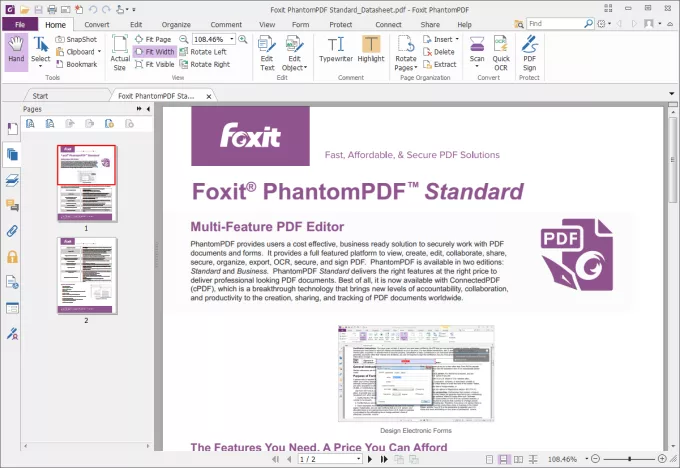The world of graphics is a realm where artistry and technology converge, allowing us to communicate ideas, evoke emotions, and convey information with stunning visual precision. In this article, we will embark on a journey into the fascinating world of graphics, exploring the fundamentals of graphic design, the distinction between vector and raster graphics, the nuances of graphic file formats, and the future of this dynamic field. Alongside this exploration, we will discover how Foxit PDF Editor plays a pivotal role in elevating your graphic design endeavors.
- Introduction
A. The Power of Visual Communication
Visual communication transcends language barriers and captures our attention in a world saturated with information. It is a cornerstone of marketing, advertising, art, and information dissemination. Graphics play a central role in conveying complex ideas and engaging audiences.
B. Enhancing Graphics with Foxit PDF Editor
Foxit PDF Editor, known for its prowess in handling PDF documents, extends its capabilities to graphic design. It provides a versatile platform for creating, editing, and optimizing graphics with precision and efficiency.
C. The Evolution of Graphic Design
Graphic design has come a long way from its origins in print media. Today, it encompasses digital artistry, web design, user experience, and more. The tools and techniques of graphic design continue to evolve, creating new possibilities for creative expression.
II. The Fundamentals of Graphic Design
A. Composition and Layout
1. Balance and Symmetry
Effective graphic design hinges on achieving balance and symmetry in visual compositions. Foxit PDF Editor’s grid systems and alignment tools assist designers in creating harmonious layouts.
2. Grid Systems and Alignment
Grid systems provide structure and consistency to design layouts. Foxit PDF Editor offers precise grid customization to ensure alignment perfection.
3. Utilizing Foxit PDF Editor for Precision
Foxit PDF Editor’s precision tools empower designers to manipulate graphical elements with accuracy, whether it’s adjusting margins, aligning objects, or fine-tuning proportions.
B. Color Theory
1. The Psychology of Colors
Colors evoke emotions and convey messages. Understanding color psychology is pivotal in graphic design. Foxit PDF Editor enables designers to experiment with color harmonies and schemes to achieve desired effects.
2. Color Harmonies and Schemes
Creating visually pleasing color combinations involves mastering color harmonies such as complementary, analogous, or triadic. Foxit PDF Editor’s color palette tools simplify this process.
3. Fine-Tuning Colors with Foxit PDF Editor
Precise color adjustments are crucial in graphic design. Foxit PDF Editor’s color correction and enhancement features offer granular control over hues, saturation, and brightness.
C. Typography
1. Typeface Selection
Choosing the right typeface sets the tone for your design. Foxit PDF Editor provides an extensive library of fonts and allows designers to import custom typefaces seamlessly.
2. Kerning and Leading
Proper kerning and leading enhance readability and aesthetics. Foxit PDF Editor’s typography tools enable designers to adjust letter spacing and line height with precision.
3. Typography Tools in Foxit PDF Editor
Foxit PDF Editor’s typography features include text formatting, paragraph styles, and text flow control, streamlining the design process and ensuring typographical excellence.
Stay tuned for the next part of this article, where we explore the dynamic interplay between vector and raster graphics, the nuances of graphic file formats, and the future of graphic design in the digital age.

